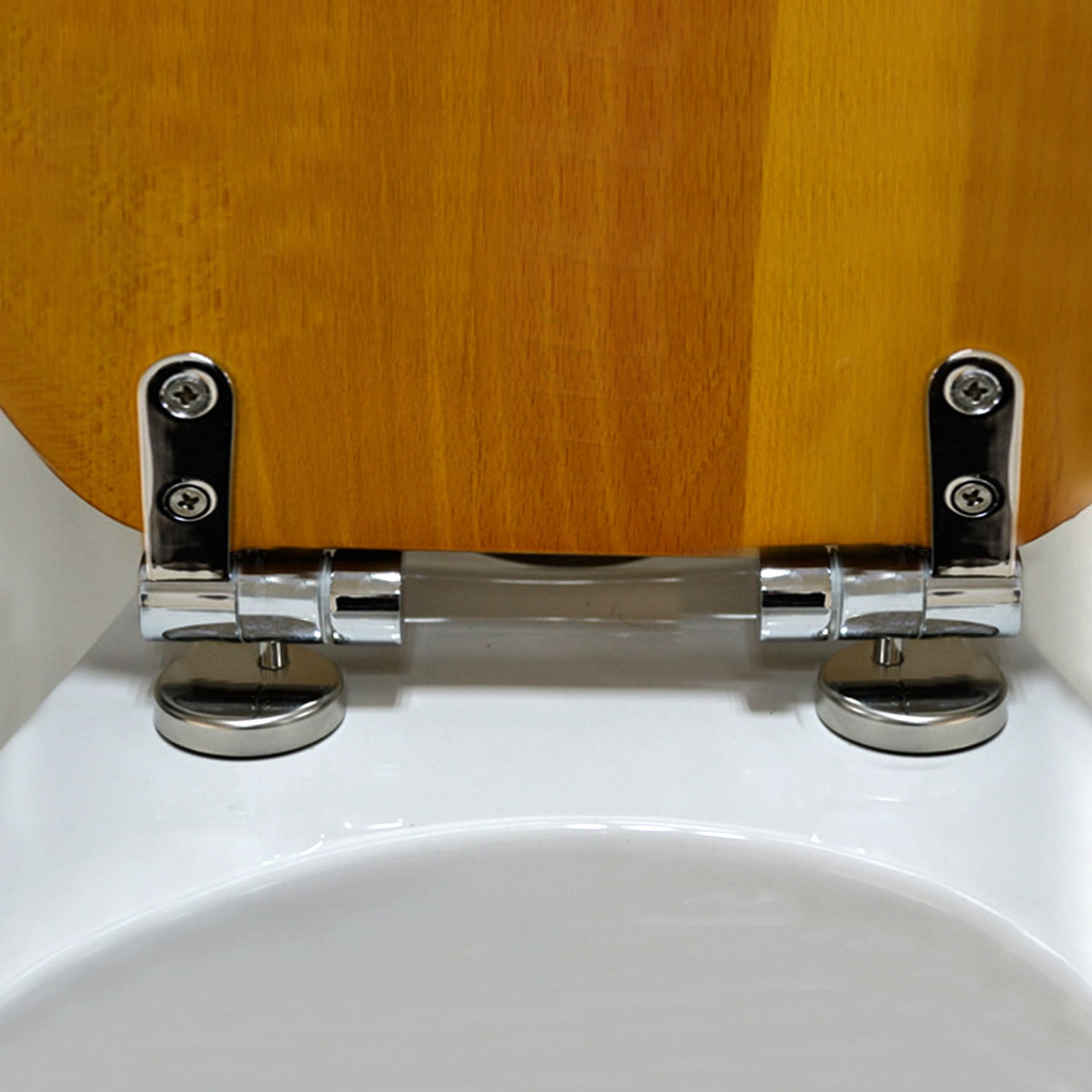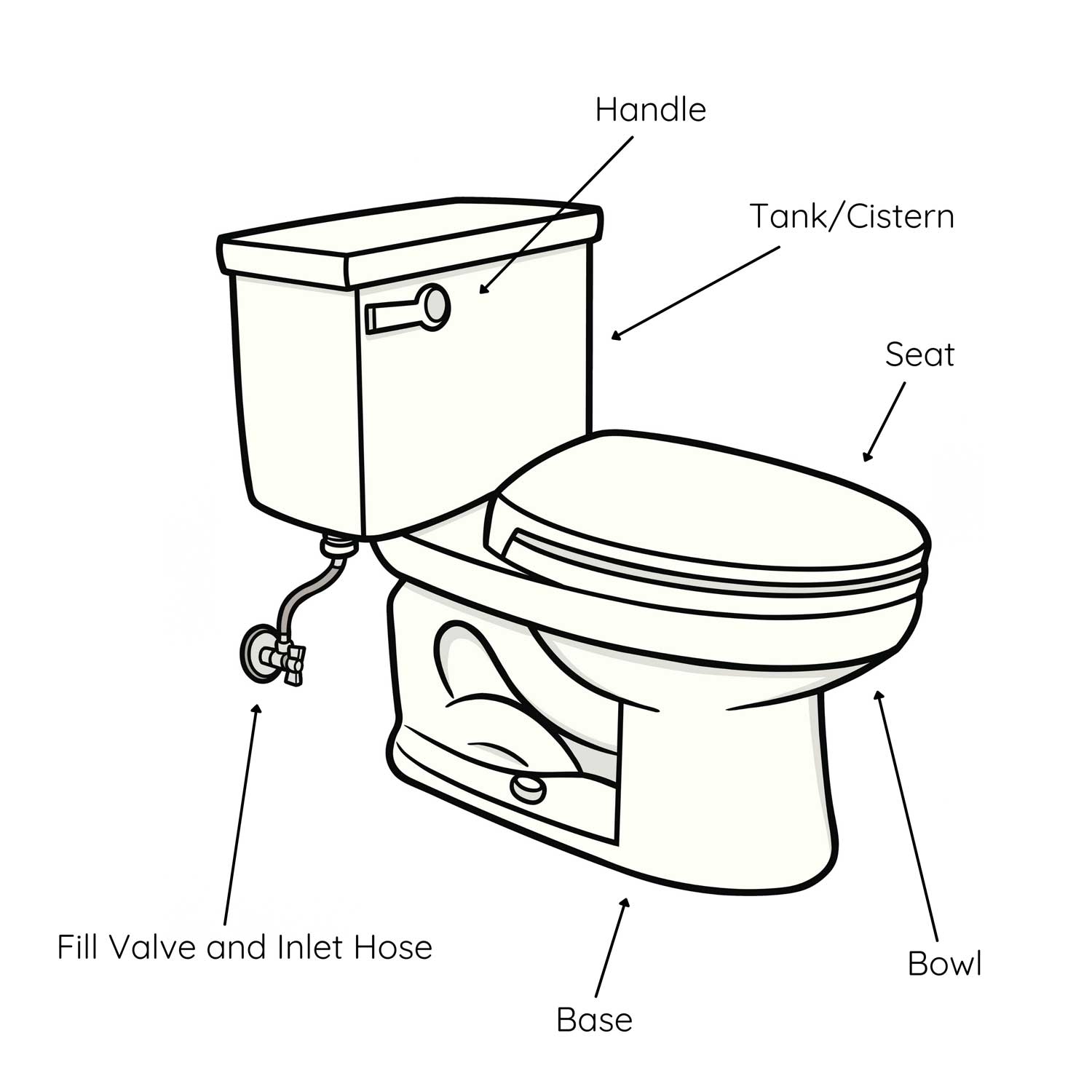Understanding Bathroom Toilet Seat Parts

A bathroom toilet seat is a crucial part of any bathroom, providing comfort and hygiene during use. Understanding the different parts of a toilet seat can help you make informed decisions when purchasing a new one or troubleshooting existing issues.
Types of Toilet Seat Parts
Toilet seats are composed of several distinct parts that work together to create a functional and comfortable seating experience. These parts include:
- Hinges: The hinges connect the toilet seat to the bowl and allow it to open and close smoothly. They are typically made of metal, plastic, or a combination of both. Different hinge styles exist, such as traditional, slow-close, and quick-release.
- Lid: The lid covers the toilet bowl when not in use, preventing odors and providing a more aesthetically pleasing appearance. It can be made from various materials, such as plastic, wood, or even heated seats.
- Bumpers: Bumpers are small rubber or plastic pads located on the underside of the toilet seat. They help to dampen the sound when the seat is closed and prevent scratches on the porcelain bowl.
Materials Used for Toilet Seat Parts
Toilet seat parts are made from various materials, each with its own advantages and disadvantages:
- Plastic: Plastic is a popular material for toilet seat parts due to its affordability, durability, and ease of cleaning. It is also lightweight and available in various colors and finishes.
- Wood: Wood toilet seats offer a more luxurious and traditional look. They can be stained or painted to match any bathroom decor. However, wood is more susceptible to moisture damage and requires regular maintenance.
- Metal: Metal toilet seat parts, such as hinges, are known for their durability and strength. They can withstand heavy use and resist corrosion. However, metal can be more expensive and may require special care to prevent rusting.
Identifying and Labeling Toilet Seat Parts
To identify and label the different parts of a toilet seat, follow these steps:
- Examine the seat: Look closely at the toilet seat to identify the main components: the hinges, lid, and bumpers.
- Locate the hinges: The hinges are the metal or plastic pieces that connect the seat to the bowl.
- Identify the lid: The lid is the part that covers the toilet bowl when not in use.
- Find the bumpers: The bumpers are small pads located on the underside of the seat.
- Label each part: Using a permanent marker, label each part with its name for easy reference.
Choosing the Right Toilet Seat Parts

Choosing the right toilet seat parts can seem overwhelming with all the options available. However, with a little planning and understanding of your needs, you can easily find the perfect fit for your bathroom.
Factors to Consider When Choosing Toilet Seat Parts, Bathroom toilet seat parts
- Toilet Type: Knowing your toilet type is essential. There are two main types: round and elongated. Round toilets have a smaller bowl opening, while elongated toilets have a larger opening, providing more space for comfort. Choosing the right seat shape will ensure a proper fit and prevent any issues with installation.
- Material: Toilet seats come in a variety of materials, each with its own pros and cons.
- Plastic: Plastic seats are affordable and easy to clean. However, they can be less durable and may not be as comfortable as other materials.
- Wood: Wood seats offer a classic look and feel. They are typically more durable than plastic but can be more expensive and require more maintenance. You’ll need to be careful about moisture exposure and choose wood that’s treated for bathroom use.
- Soft-Close: Soft-close seats have a built-in mechanism that slowly lowers the lid, preventing slamming and noise. This feature can be beneficial for families with young children or anyone who prefers a quieter bathroom experience.
- Features: Some toilet seats come with additional features that can enhance comfort and functionality.
- Warm Seat: These seats have a built-in heating element that provides a warm and comfortable experience, especially during cold weather.
- Bidet Feature: Some seats come with a built-in bidet function, offering a more hygienic and refreshing experience.
- Budget: Toilet seats come in a wide range of prices, from budget-friendly options to premium models. It’s important to set a budget before shopping to help narrow down your choices.
Measuring for the Right Size
The most important factor in choosing a toilet seat is getting the right size. If you’re replacing an existing seat, simply measure the length and width of the old seat. If you’re buying a new seat, you’ll need to measure the toilet bowl opening.
- Length: Measure the distance from the front of the bowl to the back, excluding the hinge area.
- Width: Measure the distance across the bowl opening, from one side to the other.
Once you have these measurements, you can look for a toilet seat that matches.
Replacing and Maintaining Toilet Seat Parts: Bathroom Toilet Seat Parts
/the-parts-of-a-toilet-4145300-Final-33f8f094ab434205b815fefbac3515c6.jpg)
Replacing or repairing worn-out toilet seat parts can be a simple DIY project, saving you money and frustration. Understanding the different parts and their functions will help you identify the issue and choose the right replacement. This section will guide you through the process of replacing parts and maintaining your toilet seat to ensure longevity.
Replacing Worn-Out or Damaged Toilet Seat Parts
Replacing a toilet seat part is a straightforward process, usually requiring only basic tools. Here’s a step-by-step guide for replacing common toilet seat parts:
- Identify the problem: First, determine which part needs replacement. Is it the hinges, the lid, or the entire seat? A visual inspection can help pinpoint the problem.
- Gather the necessary tools: You will likely need a screwdriver (Phillips or flathead depending on the screw type), a wrench (if the hinges are secured with nuts), and a new replacement part.
- Remove the old part: Depending on the type of seat, you may need to loosen or remove the hinges, lid, or the entire seat. Follow the manufacturer’s instructions for your specific model.
- Install the new part: Once the old part is removed, carefully install the new one. Align the holes and screw in the fasteners, ensuring they are secure but not overtightened.
- Test the installation: After installation, test the new part to ensure it functions properly. Make sure the seat is stable and the hinges operate smoothly.
Troubleshooting Common Toilet Seat Problems
Toilet seats can experience various issues, but most are easily addressed. Here are some common problems and their solutions:
- Loose or wobbly seat: This is often caused by loose screws or worn-out hinges. Tighten the screws or replace the hinges if they are damaged.
- Broken lid: If the lid is cracked or broken, it needs to be replaced. Most toilet seat manufacturers sell replacement lids separately.
- Stuck or noisy hinges: This can be due to dirt or debris buildup. Clean the hinges with a damp cloth and lubricant. If the hinges are damaged, they need to be replaced.
- Seat won’t stay down: This could be caused by a loose hinge or a worn-out spring mechanism. Tighten the hinge screws or replace the spring if necessary.
Maintaining Toilet Seat Parts
Regular maintenance can extend the lifespan of your toilet seat and prevent future issues. Here are some tips for maintaining your toilet seat:
- Clean regularly: Wipe down the seat and lid with a damp cloth and mild cleaner. Avoid harsh chemicals or abrasive cleaners that can damage the finish.
- Tighten screws periodically: Over time, screws can loosen, leading to a wobbly seat. Periodically check the screws and tighten them as needed.
- Lubricate hinges: Applying a small amount of lubricant to the hinges can help them move smoothly and prevent squeaking.
- Avoid slamming the lid: Slamming the lid can stress the hinges and cause them to break prematurely. Close the lid gently.
